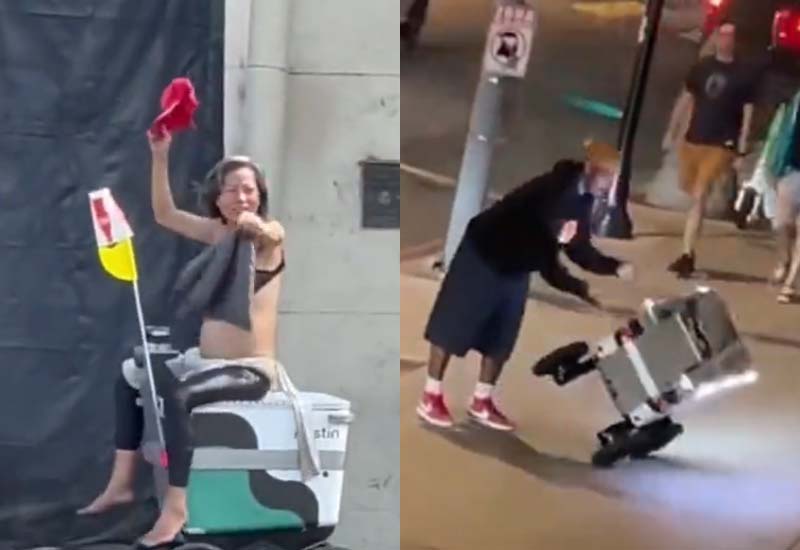NEW YORK, NY – In the bustling streets of New York City and other major cities, a new breed of delivery workers is making its mark – delivery robots. These autonomous machines, equipped with advanced technologies, are swiftly navigating the city’s crowded sidewalks to revolutionize last-mile logistics for businesses and consumers alike.
Like other denizens of the Big Apple and other major cities, they also risk being robbed, assaulted and attacked each time they hit the streets. Now, people are targeting the robots in the latest upgrade to out-of-control crime in America’s urban centers.
.
In recent years, the demand for fast and efficient deliveries has grown exponentially, fueled by the rise of e-commerce and on-demand services. Traditional delivery methods, relying on human couriers and delivery trucks, have faced challenges in coping with the city’s notorious traffic congestion and unpredictable delivery times.
This is where delivery robots come into play, offering a promising solution to enhance the efficiency and reliability of the delivery process.
Artificial Intelligence (AI) and sophisticated sensors allow these robots to independently plan routes, detect obstacles, and safely navigate through pedestrian-heavy areas, making them ideal for urban environments like New York City. They are designed to carry packages of various sizes, from food orders and groceries to parcels and goods, providing businesses with a cost-effective and eco-friendly delivery alternative.
Companies like Starship Technologies, Kiwibot, and Nuro have been at the forefront of deploying delivery robots in the city. These robots can be summoned through smartphone apps, allowing customers to place orders and track their deliveries in real-time. The convenience and speed of this new delivery method have garnered positive feedback from consumers, particularly those living in densely populated areas where parking and traffic congestion have long been obstacles to timely deliveries.
Delivery robots can potentially alleviate traditional delivery methods’ environmental impact. With zero emissions and low energy consumption, they contribute to New York City’s efforts to reduce carbon footprint and create a more sustainable future.
However, the widespread adoption of delivery robots in the city has not been without challenges. Concerns about safety and pedestrian interactions have arisen, prompting the need for rigorous testing and adherence to strict regulations. Companies deploying these robots have emphasized their commitment to safety, ensuring that the robots operate within designated speed limits and follow traffic rules.
Additionally, some delivery workers have expressed concerns about potential job displacement due to the rise of automation in the delivery sector. To address these issues, industry leaders have emphasized that delivery robots are meant to complement human couriers, not replace them. Human workers can focus on more complex tasks while robots handle the repetitive and time-consuming last-mile deliveries, ultimately leading to a more efficient and balanced delivery ecosystem.
